Comparative table of operating systems windows and linux. Which operating system is better - Windows or Linux?
Security, freedom, free, open source, popularity, quantity software, these are the main differences between Linux and Windows, which most often cause users to switch to this operating system. Everyone knows about them, or almost all users. But what if we dig deeper, how exactly these systems differ? What are the main technical differences?
In this article, we will look at how windows differs from linux from a technical point of view, we will try to understand why Linux is considered more secure, and also understand the essence of the differences.
1. The core of the system
The main component of every operating system is its kernel. And even with that, there are huge differences between operating systems. The Linux kernel is monolithic, it consists of a single file, and modules can be used to extend its functionality.
All programs communicate with the kernel through system calls, they are standardized, so the same programs can work on different platforms running Linux, such as x86 and ARM.
All drivers are built into the kernel, but most of the programs are in user space, including the graphical shell. A monolithic structure provides more security, because if you disable module support at the kernel build stage, you will not be able to execute your code at the kernel level.

This is the main, but not obvious, difference between Linux and Windows. Windows has a completely different type of kernel. It uses a hybrid core, which consists of many small parts - dll libraries, each of which is strictly responsible for its own function.

But that's not all, system calls are not used, instead user programs are forced to refer to the documented libraries user32.dll, gdi32.dll, kenel32.dll, advapi32.dll. These libraries call functions from ntdll.dll, which is directly linked to the kernel.
The drivers are managed by the hal.dll library and they are connected to the kernel separately. The output to the screen is controlled by the graphics subsystem of the kernel, which includes all work with graphics, including the shell. The ability to use a user kernel mode makes it easy to adapt the system to any type of program, such as win16 or POSIX. But this flexibility comes at the cost of performance.
2. Structure of the file system and disks
You will immediately notice that the linux operating system is very different from windows in the structure of the file system. Linux provides the file system more realistically as it really is. The file system structure starts from the root, or, in other words, the main directory of the system partition, and all other disks are connected there according to the necessary subdirectories.
Files are sorted into directories based on type, for example, executables are in /bin/, settings are in /etc/, and resources are in /usr/. It turns out that one program is divided throughout file system, but it does not ferret out the difficulties due to the package manager.
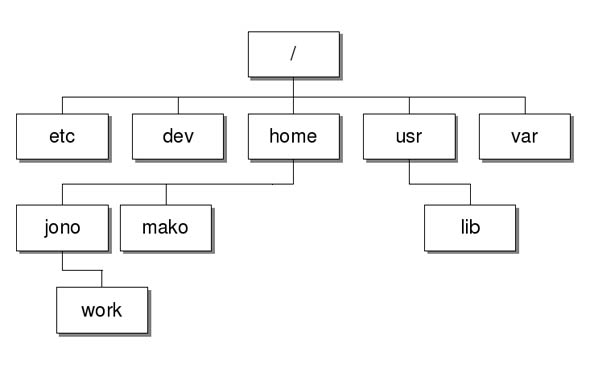
Storage devices in Linux are named alphabetically, and the partitions on them are named numbers. For example, the first HDD will have the name sda, the second - sdb. And the sections on the first one will be numbered - sda1, sda2, sda3 and so on. Partitions can be freely mounted to any desired folder, for example, as a home directory or /var/.
Windows creates an additional abstraction. Although disks and partitions are named in the same way as in Linux, all of this is hidden by the operating system. The user is provided with such an abstraction as the C:, D:, E:, F: drive, and so on. Each of them is a partition on the hard drive, and more detailed information the system hides from the user. It's also good for newbies. As for the distribution of files, one program is in one folder, with all executable files, settings and resources.
3. Configuration and data storage
On Linux, all settings are stored in regular files, which are located in the file system. The global configuration files are located in the /etc/ folder. They apply to all users who use this computer. User program settings are located in hidden subdirectories of the user's home directory.
Such storage is quite convenient, because configuration files easy to transfer to another computer, and decentralization increases the reliability of the system. Each program creates its own configuration file, with its own syntax, and they are edited mostly by hand. Almost all settings can be made via GUI, but often the graphical utilities create very confusing configurations. Handmade always looks better.
This is also an important difference between linux and windows. Windows stores all application, system, and driver settings in a special database called Windows registry. All settings are divided into branches and keys, and programs can access them very quickly.
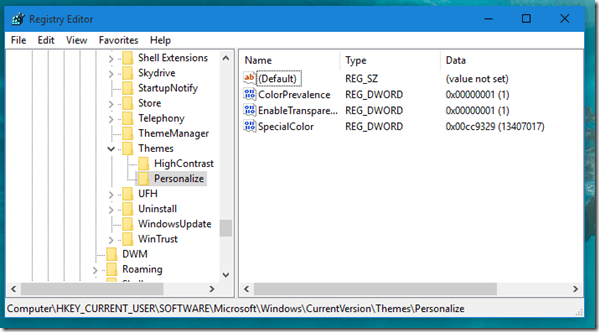
This way of provisioning gives by default the security of the settings, the ability to change them remotely and easily change them using graphic programs. But there are also big drawbacks: the settings cannot be transferred to another computer, the centralized settings system can be damaged and this will damage the entire system.
In addition, programs very quickly overwhelm the registry and it starts to take up too much, so it bootstrap it takes a lot of time. It's hard to say which technology is better, but this is also the difference between linux and windows and it's up to you to choose which one to use.
4. User management and rights
Linux was originally designed as a multi-user system. Files have three categories of access - this is the owner user, user group and everyone else. There are also three access options - read, write and execute. With the help of a combination of these simple parameters, access control is exercised to all files in the system, and since in Linux everything is a file, it means everything.

Windows was designed to be run by only one user, which initially caused a lot of security problems. But then the user system was improved to a multi-user system, which, in addition to the owner, group and others, includes detailed ACL access lists. We can say that here the difference between windows and linux is not so great.
5. Program management and updates
Let's continue windows comparison and linux. Managing programs and updating them is a huge difference between windows and linux, everything is implemented differently.
Linux has software package repositories. There is, if not all, then almost all the necessary programs, drivers and system components. You will almost never need to download programs from the Internet, although there is such an opportunity too.
The use of centralized repositories gives greater security and reliability, as well as the ability to update. As soon as a new version program appeared in the repository, you can update it. The update process is performed by one command at once for the entire system, when it is convenient for you.
There are no repositories in Windows, you will have to search for all the necessary programs on the Internet and install them manually. Each program will update itself when it sees fit, including the system. To update the system, you need to reboot, and in the installation issue Windows updates is very persistent.
conclusions
In this article, we tried to figure out how windows differs from linux. Moreover, we did not dwell on such well-known things as freedom and free of charge, but tried to reveal exactly the technical details, as far as possible in such a small article. If you are just facing the choice of operating system, I hope this comparison of windows and linux was useful for you.
It just so happens that the vast majority of beginners usually choose Windows as their first operating system. Apple products, unfortunately, are not available to everyone, and free Linux systems seem to many so harsh that they don’t even look in their direction.
But now we have witnessed interesting processes that can greatly change the established ideas. Computers from Apple in light of recent economic upheavals have become even more expensive. Microsoft started a global update, which resulted in Windows 10, which is a confusing labyrinth of the wreckage of old systems and new ideas. And Linux, meanwhile, got rid of past shortcomings, improved the user interface and acquired a solid set of software.
Let's compare some aspects Windows usage 10 and popular free distribution Linux Mint.
Settings
After the release of Windows 10, only the lazy did not write about the complexity of the settings of this operating system. Most of the necessary options are concentrated in the new control panel, others remained in the old one, and some could not be found at all. Yes, in subsequent updates, Microsoft continued to finish the settings system, but you still can’t call it easy and understandable.
In Linux Mint, all settings are concentrated in one place - in a special utility called "System Settings". Here you can change literally any parameter of the system without having to wade through a series of additional utilities, dialog boxes and drop-down menus.
Installing programs
The operating system itself is only an environment for executing software. Therefore, each New user First of all, he must install the programs he needs. On Windows, you have to search for developer sites, then look for a download link, then deal with the intricacies of installing each utility. Yes, there is now the Windows Store, which aims to make this process easier. But its content is so meager that not all users use its services, preferring to install programs the old fashioned way.
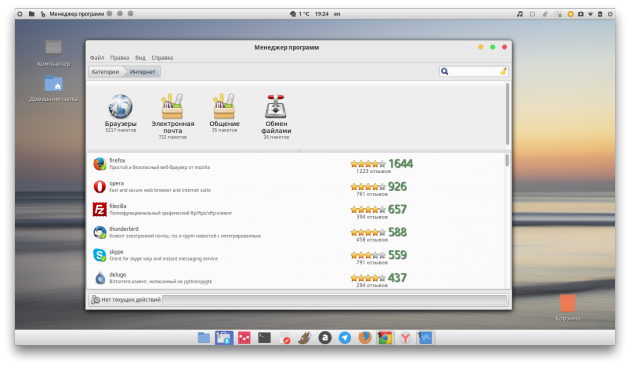
Linux Mint, like most other free distributions, has a built-in directory of available software. You only need to type in the name necessary program in the search bar and click on just one button - "Install". Easier than you can imagine.
Interface
The epochal story of how Microsoft first removed the Start button, then returned the Start button back, will haunt the minds of outraged Windows users for a long time to come. This really matters to them, since such changes in the interface can only be made by system developers. It's good that users were left at least the opportunity to change the color of the panels and put their wallpaper on the desktop.

Things are quite different in Linux. Here you are your own boss and can customize your work environment exactly the way you want. The layout and appearance of panels, buttons, applets, menus, tooltips are completely under your control. And if it seems to you that the installed environment does not suit you, then you can in no time. Linux Mint users, if desired, can transform the interface of the operating system in such a way that it resembles Windows or Mac OS. Or they can not change anything, because by default everything is beautiful and thought out to the smallest detail here.
Security and privacy
About the situation with viruses repeatedly already. In this section, I want to draw your attention to the problem of Windows tracking users. Such a problem really exists, and it worries you, judging by the popularity of those devoted to it. Yes, Windows 10 is constantly collecting user information and sending it to Microsoft. It is rather difficult to wean her from this occupation, and this will require the presence of computer knowledge, especially since with each update new loopholes appear for leaking the collected information.
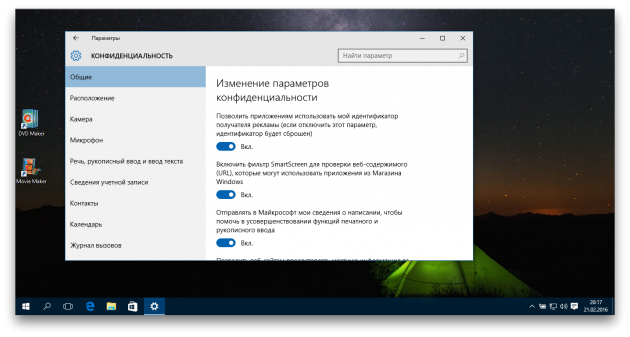
IN operating systems ah on Linux based such problem is absent completely. That is, you can install almost any popular distribution for yourself and forget forever that someone can spy on you and eavesdrop on you. If privacy issues are important to you, and it is a pity to spend time and effort on fighting spyware in Windows, then the choice is obvious.
No imposed software
Almost all novice users love games. Even more they love free or hacked games. If this passion is not combined with at least minimal computer literacy, then very quickly their operating system is clogged to capacity with junk software, which is installed along with toys and some free programs. All these additional panels in browsers, fake antiviruses, Internet accelerators and other rubbish very quickly bring Windows to a state of complete unusability.
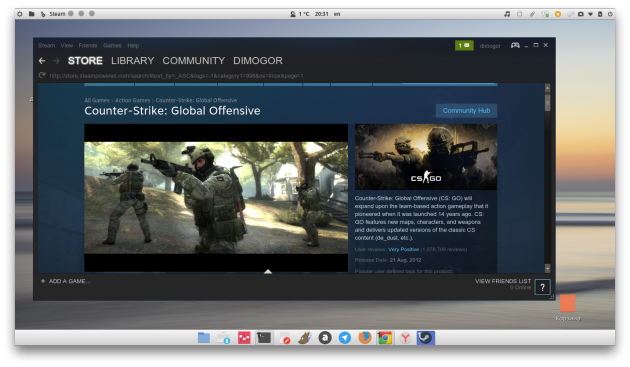
Linux users are generally not familiar with this phenomenon. To install programs and games, there is, as I wrote above, a special software store in which all programs are tested. In addition, you can use Steam to install games, the safety of which no one doubts.
Updates
Updates to Windows and installed software is another problem that users face. System updates are often very cumbersome, take a long time to install, and require a reboot. It's so annoying that many just shut down the system automatic update although this should never be done. Regarding the centralized update system installed programs, then it simply does not exist in Windows. The developer took care to build the "update" into his program - well, if you are too lazy, then you will continue to use the old version.

Installing updates in Linux Mint is easy and pleasant. Once a day special utility itself will check for new packages for the operating system and all the programs you have installed. If they are found, you will see a small icon in the system tray. You just need to click on it, and then in the window that appears, click on the "Install Updates" button to bring your software to the most up-to-date state. No reboots, no waiting, no problems.
As you can see for yourself, the modern look of free Linux-based operating systems, at least the most popular distributions, has nothing to do with the myths that often scare novice users. They are simple, convenient, beautiful and so friendly that even those users who have a minimum level of computer literacy can handle them. In addition, Linux offers the highest level of reliability and security, which is especially important for beginners.
Personally, I have already done many experiments on installing Linux Mint on the computers of novice users and have always heard only positive feedback. What do you think about this?
The situation with the most popular Windows and Linux operating systems in Russia is very similar to the situation with other products - for example, with Nvidia graphics cards and ATI. And until now, the debate about which is better - Windows or Linux, does not subside. We will present you a different view of this problem - from the point of view of specific tasks solved by a particular OS.
Linux or Windows
Comparing these systems, it must be taken into account that they are completely different in their qualities. It's like comparing, for example, yogurt and fermented baked milk or comedy and melodrama - someone will prefer one, someone else. Also, these OS (operating systems) - they are just very different. Windows is a ready-made solution with a large set of functions, Linux is a kind of designer that you can customize to your needs. This is precisely the main difference between Linux and Windows - the ability to adapt this OS for completely different tasks. And Windows, in turn, is perfect for those who do not want to delve too deeply into the OS settings - everything is already configured there, but it is configured in a certain way, and it will be quite difficult, although possible, to reconfigure.
Windows and Linux: Comparison
First of all, Linux, unlike Windows, is a free operating system. After installation, you can use many applications and programs to perform various tasks completely free of charge. As for the functional component, here today the systems are approximately equal, although not so long ago Windows could perform much more tasks. Another important difference between these systems is that Linux, unlike Windows, is not an operating system per se. Linux is the kernel of the operating system, on the basis of which a large number of special programs designed to perform various functions. Now let's compare these systems in terms of malware (software). With Windows it is clear - viruses and spyware dark darkness is written under it. However, there is an opinion that no viruses have been created under Linux (as, by the way, under Mac OS). This beautiful fairy tale is actively fueled by fans of these operating systems, who simply idealize them. In fact, under Linux, as well as under Mac OS, a sufficient number of malicious programs have been written, although, in fairness, we note that there are many times less of them than for Windows.
Other differences between Linux and Windows
They concern, first of all, launching under each of these operating systems. individual applications and the ability to cope with the difficulties that arise during the operation of a particular OS. As you know, all the main applications - games, video and audio players, programs for working with graphics and text files etc. and so on. Written for Windows. That is why, in order to install something under Linux, you need to know the settings of this system very well. Similarly, you may have problems with drivers (launchers) for various devices. This does not mean that these programs and devices under Linux do not work. They work, but it will take a lot of time to set them up. But fans of the game will have a hard time. It's good if your favorite toy has various versions to run under Windows, Linux and Mac OS. If not, then you will have to study a lot of special articles on how to run this or that game under your OS - and it is far from a fact that it will work correctly. When it comes to features such as OS security and reliability, Linux has an advantage here, however, in order to use it, you need to understand quite well the system settings, which will take a lot of time to learn. In the following, I have presented for you the main characteristics of each of these systems in the form of a list.
Comparative characteristics of Windows and Linux
- Windows is a paid OS, Linux is free
- Almost every application and device for PC has drivers to run under Windows, Linux can have problems with this.
- A huge number of malicious programs have been written for Windows - viruses, trojans, etc. For Linux, they are many times less
- With some Windows problems even a novice user can handle it, and in order to eliminate failures in Linux work, you need to know the settings of this system well
- Windows is more convenient in administration (management), but Linux is more stable and safer
- Windows is quite gluttonous in terms of resources, Linux is much less demanding on the resources of your PC
- Almost any game runs under Windows, some games under Linux may require professional knowledge or use of additional programs
- To work in Windows, the user does not require any special knowledge, since it is already “ready to use”, while in Linux you need to delve into the settings, but you can customize it to your specific needs
Thus, each of the presented systems has both its strengths and weaknesses, and there is no and cannot be a clear answer to the question of what to choose - Linux or Windows - everything is determined by the requests of a particular person. As you probably noticed, these systems are too different and fit different needs.
Windows and Linux are the most popular operating systems on the world market. The debate about which one is better has not subsided since the advent of systems. There are many adepts, as well as opponents, for each of them. Of course, both Linux and Windows have their advantages and disadvantages, which some users are willing to put up with, while others are not. In this article, we will try once again to push the foreheads of these two giants and, finally, find out which is better: Windows or Linux. Go!
Every platform has its advantages and disadvantages
Let's start with Linux. In general, this OS is less popular than Windows; working with it, as a rule, raises more questions from users. It is worth noting that Linux is more likely focused on professionals, and not on ordinary users. It is those people who want to get the most opportunities when working with a computer, and become the most ardent fans of this system. Now let's take a look at each of the advantages of Linux in turn.
The main and weighty advantage is free distributions, the choice of which is quite extensive. Linux is the basis on which developers "hang" a graphical interface for the convenience of users. All distributions are official and completely free, which means that you have the opportunity to get at your disposal a proven and reliable OS, which is a licensed product. Windows has nothing to brag about in this respect. The most popular distributions are: Ubuntu, Mint, Fedora, Mandriva - the list goes on and on. Choose what you like best.

Free software
As you already understood, Linux is a real find for those who want to use a quality, licensed product for free. The choice of programs is quite extensive, but you still won’t be able to use the most popular tools for free.
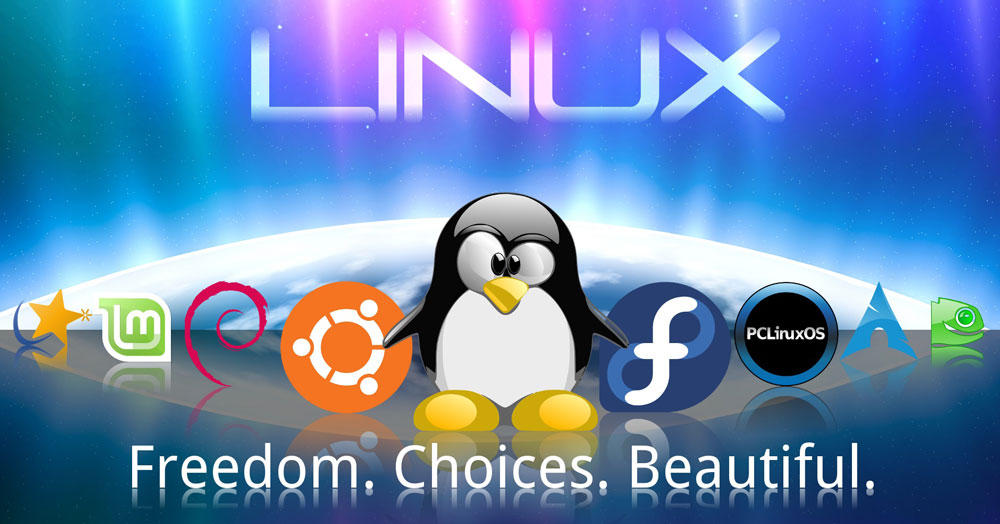
variability
Linux is a very flexible system that allows you to do literally anything with yourself. This makes this operating system an excellent choice for programmers. Computer scientists can do whatever they want in Linux, creating a wide variety of software to solve a variety of problems.
Design
Although the beauty of Linux is not in the graphical interface, one cannot fail to note the stylish and modern design some distributions, which many will like.

Performance
Linux OS is absolutely not demanding on hardware and works perfectly even on the weakest machines. Experiment with distributions and find the one that gives you the best experience for maximum performance.
Now for the disadvantages. Linux, for all its functionality, cannot be called an entertainment system. For fans of computer games, this OS is definitely not suitable. In addition, you will have problems using popular software products, and instead of them you will have to use their counterparts, from which few people are enthusiastic. To summarize all of the above, the Linux OS is really good for computer professionals, to whom it gives advanced work opportunities, and for those who need a free licensed operating system and software products. At the same time, it is difficult to call Linux really good choice just for home use.
The turn has come to talk about the mastodon and the almost absolute market leader in operating systems - Windows. This product from Microsoft is used on the vast majority of devices around the world. Perhaps there is no person in the world who would not come across this OS. Some people like her, some don't, but everyone worked with her. And now let's move on to the analysis of all the advantages of Windows and try to uncover the reason for such a success of this product.
Prevalence
The popularity of Windows has led to the emergence of a huge number of manuals and articles with answers to all questions of interest regarding working in the system or correcting errors in it. Although this OS is paid, users licensed versions not so much. It is pirate Windows versions are installed on almost every computer in the CIS countries due to their availability.
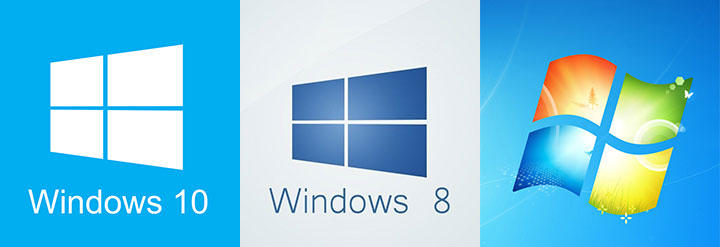
Simplicity
A huge plus of this OS is that it is convenient for both simple users and advanced users. Windows provides the ability to work in mode command line, make changes to the registry, and so on, however, for those who do not need all this and who do not understand this, this OS offers a clear and pleasant graphical interface, which is not difficult to understand.

Games
Where without it. Quite a lot of users regularly or occasionally play computer games. The undoubted advantage of Windows is that almost all existing PC games are compatible with it. And this means that if you have a Microsoft product installed, you get access to a huge selection of computer entertainment.

Software
The vast majority of utilities and applications are created specifically for Windows, which is very good for any user. All the most popular software products are embodied on Windows, and this gives you very wide opportunities when working with a computer.

Compatibility
Unlike Linux, you will hardly find any device that does not have Windows drivers. By choosing a product from Microsoft, you can say that you eliminate all problems with device compatibility, since all manufacturers are primarily focused on creating products that are compatible with Windows.

Design
Recently, the OS from Microsoft can boast of these. Design latest versions very unique and original. The huge tiles of the 8th version did not appeal to many, but the decision of the developers to combine the design of the new and the old into the 10th version of the system satisfied many users. Windows 10 very organically intertwines the classic features invested in older versions with the most modern and newfangled developments.
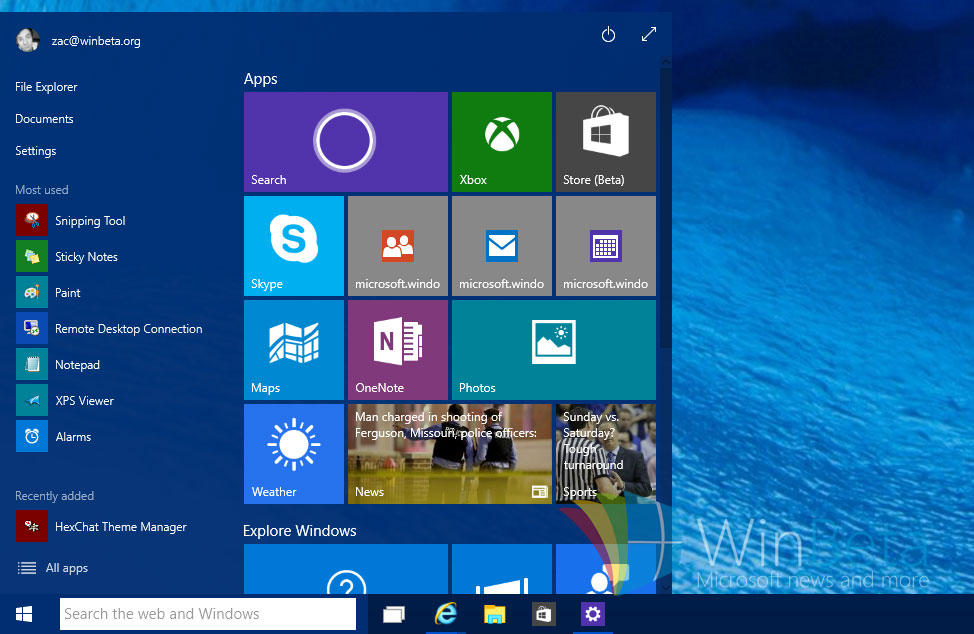
Microsoft Office
Everyone who has had to work in Libre Office on Linux understands that they did not come up with a better one. text editor than Word. This utility is really indispensable in our time, and against the background of it, Libre Office looks like one big misunderstanding, working with which brings nothing but torment.

As for the disadvantages, the main disadvantage of Windows is that this OS costs money. This problem is especially relevant for the CIS countries. All users are constantly downloading pirated versions that are not verified and reliable, and this, in turn, greatly affects the reputation of Windows and Microsoft. Another drawback, which to some extent can be associated with the first one, is the frequent “crashes” of the system. Probably everyone is familiar with the "blue screen" or, as it is also called, the "screen of death". Windows user. Like it or not, the reliability and stability of this system leaves much to be desired. In conclusion, we can say that the strength of Windows is that this system is for everyone. Everyone will find something of their own in it, regardless of their own skills or tasks. We can say that this is what makes this product so popular all over the world.
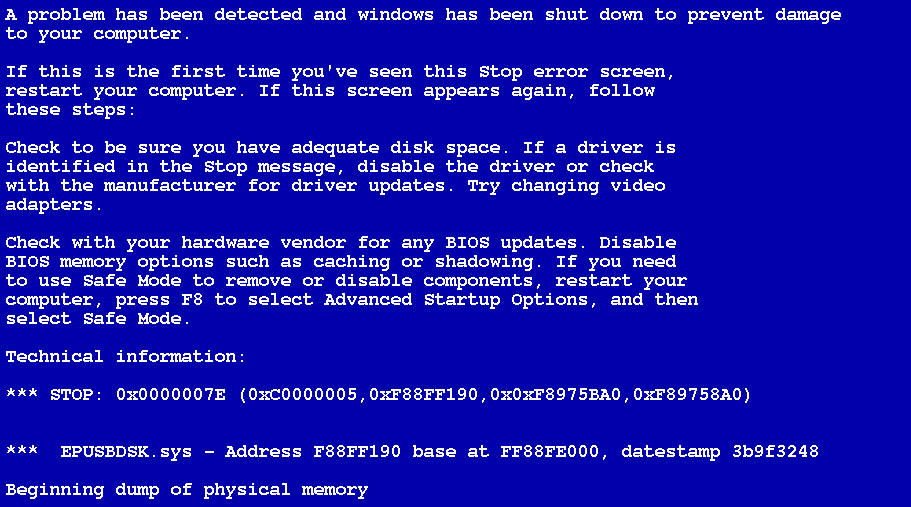
As you can see, it is not possible to make an unambiguous choice in favor of any of the systems discussed in the article. All I can advise you is to try to work with one or the other, and then decide what is best for you. After all, everyone has their own ideas about good design, functionality, performance and other aspects in which comparison can be made. With all the advantages and disadvantages of each of the operating systems, it is impossible to make an objective verdict, since in the end it all comes down to elementary “taste”. This article is intended to give you the necessary food for thought, and which is better: Windows or Linux - you decide.
Leave your feedback on the article and write in the comments your opinion about which of the considered OS you consider the best and why.
The operating system is a complex of interconnected system programs, the purpose of which is to organize the interaction of the user with the computer and the execution of all other programs. The operating system acts as a link between the computer hardware and running programs, as well as the user.
Microsoft operating systems are the most popular in the world. Their share is 95% among all operating systems. The firm's most stable systems are based on NT technology (Windows NT/2k/XP). In the last six years, the popularity of the operating system called Linux has been growing.
Both of these operating systems are multi-user, multi-tasking. They have extensive network support, data protection, and many other similar features. As a result of this, their areas of interest regarding the consumer coincide, which served as the basis for the conflict that flared up both between fans of the OS and between their creators.
I will not focus on Windows OS, since almost anyone who uses a computer probably uses Windows as their desktop operating system. But not everyone is familiar with the Linux OS, so I will take a closer look at this OS.
Database management systems
Most popular among web application developers DBMS MySQL is available for both operating systems, but given the popularity of the "classic" PHP + MySQL bundle, it can be considered a little closer to Linux. Moreover, a bunch of MySQL, PHP language and the Apache web server is the "standard" LAMP server software suite for Linux today.
MS SQL DBMS, which is often used by developers of complex corporate portals with high requirements for reliability and stability, works only in Windows environment. The same applies to Microsoft Access databases.
Classic point comparison
linux
pros
- Most Linux distributions are free and are free and free to use. Based on the program code of both Linux itself and the programs included in it, you can create your own products. Supplied with a standard set of application software.
- In Linux, the user can choose the distribution that is more suitable for solving his problems, and then also optimize the system for himself.
- The existence of a graphical interface eliminates the need to edit configuration files in an inconvenient way.
- The security situation in Linux is generally very similar to Mac OS X. They are at a very high level in both systems and well ahead of Windows.
Minuses
- As a result of the GPL policy, there are now over a thousand different Linux distributions. Not all of them are worthy of attention, it is difficult for the user to understand such a variety of versions and choose what they need.
- In addition, free means the almost complete absence of technical support users.
- Despite the very large amount of software written for Linux, users migrating from Windows will find that some of the software will be unfamiliar to them. Not all programs are cross-platform and have versions for both Windows and UNIX systems. The biggest problems arise with specialized professional software, a significant part of which is written only for Windows systems.
- There is no equivalent replacement for some applications in Linux. This, for example, is the well-known Photoshop, AutoCAD, video editing programs, as well as locally oriented software created taking into account Russian legislation (accounting software, reference and legal bases).
- For younger audiences, a serious disadvantage is the inability to run some modern games in a Linux environment, and here Windows has a huge advantage over both Linux and Mac OS X, since the PC games industry is primarily focused on Windows.
Peculiarities
- A variety of special Linux operating systems are available for different user needs. For example, for working with multimedia (Ubuntu Studio, JackLab Audio Distribution, 64 Studio…), for educational institutions (Edubuntu, Skolelinux, NauLinux…). Separately, commercial distributions can be mentioned. They are not free. Mostly these are corporate or special variants of Linux. Money in such distributions is mainly taken for technical support.
- Another important difference between Linux and Windows is that Linux distributions come with a large set of application software. That is, after installation on a computer, you have a completely ready-to-use system and do not need to look for application software and think about paying for a license.
- Most Linux OSes default to one of two GUIs, GNOME or KDE, so even if you change one Linux distribution on the other, there are no problems for the user, he gets into a familiar graphical environment. Both interfaces have approximately the same distribution. If you characterize them very briefly, then outwardly KDE resembles a working Windows table, and GNOME is the Mac OS X desktop.
- To solve the problems of incompatibility between applications of different operating systems, the Wine project was created. This software is used to run Windows applications and run Windows games on Linux. Wine is an alternative implementation of the Windows API for UNIX-like systems.
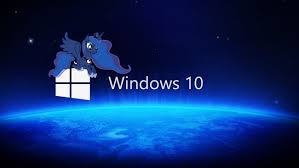
Windows
The main feature of Windows is its massive distribution. This is due to the fact that this is an operating system created for users, it does not force the user to adapt to the system, it adapts to his needs.
This is the most widespread operating system in the world, despite the fact that, according to public opinion, it is the most “buggy”, “unstable”, unreliable” and besides … .
pros
- Guaranteed 100% support for any hardware, for this OS there is a driver for any device, and it itself contains many pre-installed drivers for quick hardware recognition.
- There are many professional application programs, full-featured analogues of which are not available in other operating systems, such as Promt and Photoshop.
- The simplicity and clarity of the interface, which makes it available for use by anyone, even those who do not have primary computer skills.
- Applications Microsoft Office have already become the standard for office work. The user can get any support or advice on his licensed Windows OS.
Minuses
- This OS is very demanding on the hardware resources of the computer, especially on the amount of RAM.
- Its graphical interface, although beautiful and convenient, is cumbersome and clumsy. As a result, many turn off its many graphical bells and whistles.
- This system is considered more vulnerable than the others. This is due to the security structure itself, such as the ability to always run with administrator rights (which is partly resolved in the latest Vista). At the same time, thousands of old applications that were written for XP and other versions of Windows must run on the system. The user is forced to give permission to run each such "old" program. In addition, the dialog box itself asking whether to run a particular program provides users with too little information to make a decision.
- Another inconvenience: even to remove a shortcut from the desktop, you need to confirm your intentions three times. This is annoying and leads to the fact that the "Allow" buttons and others are pressed simply thoughtlessly - the effectiveness of the entire protection mechanism is practically reduced to nothing. As a result, you have to deal with a huge number of viruses that use precisely the vulnerabilities of a given OS to penetrate, including user errors that it provokes.
- The system is paid, its price exceeds the cost of buying or downloading a freely distributed OS.
Conclusion
It's important to understand that organizations choose Linux for the facts, not for these comparison tables. Returning to the topic of Linux facts, it should be said that Linux is indeed a reliable, flexible and highly efficient operating system. Here are some typical application examples:
- The department needs a Web or e-mail server, and Linux makes it possible to use unnecessary machines for this purpose.
- Team (for example, in the production of computer graphics for a film Titanic) cost-effective computing is required, for which a highly efficient computing complex is being created.
- Engineers who spend many hours at the keyboard switch from NT to Linux, irritated by the constant need to reboot.
- Internet Service Providers (ISPs) are moving from NT to Linux because of the latter's better manageability, 24x7, while serving tens of thousands of users.
NT, on the other hand, has traditionally held the palm when it comes to ease of use, ease of installation, service predictability, and application count. But these distinctions seem to be blurring. Many organizations prefer the support provided by Red Hat or some other Linux vendor to that of Microsoft.
Now Linux is better than NT handles installing plug-and-play devices. The Linux desktop can be customized to not only look like Windows, but you can also run application packages that are functionally equivalent to Microsoft Office. The implementation of new standards and protocols happens earlier in Linux. This is because the source code is readily available, patches for hardware defects for Linux are sometimes released on the same day.
NT remains the preferred choice in many cases. For organizations that it suits, those who have a compatible or powerful enough Hardware, and especially for those who rely on ActiveX or other Microsoft proprietary protocols, Linux won't offer much advantage.
For example, the development team Wired HotBot, has confirmed that they sacrificed reliability and efficiency in their recent move to NT, but in doing so gained access to a number of new NT technologies. NT boasts directory service replication, an export-licensed cryptographic API, transaction processing, and a host of other new features.
